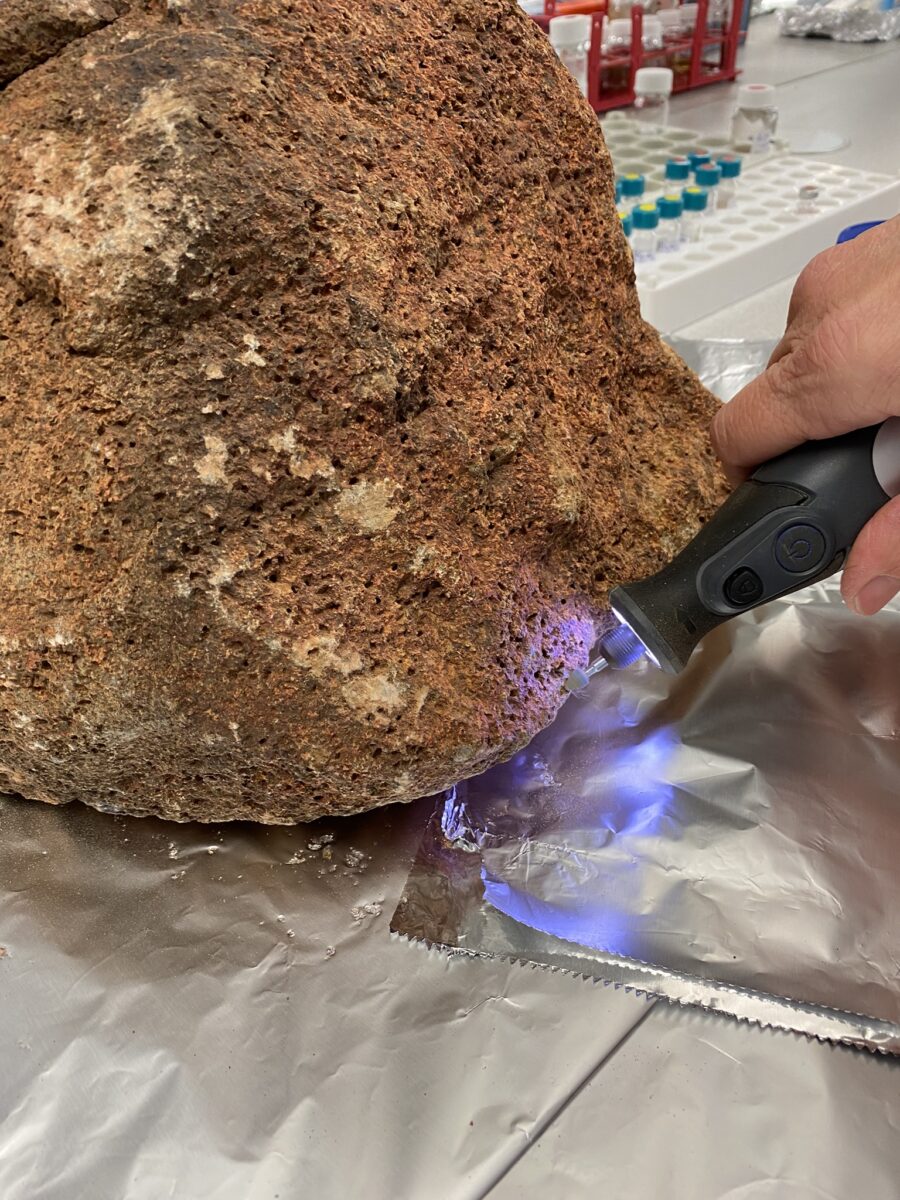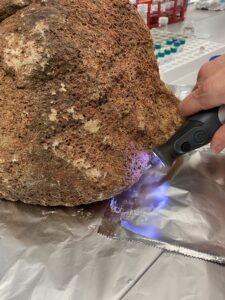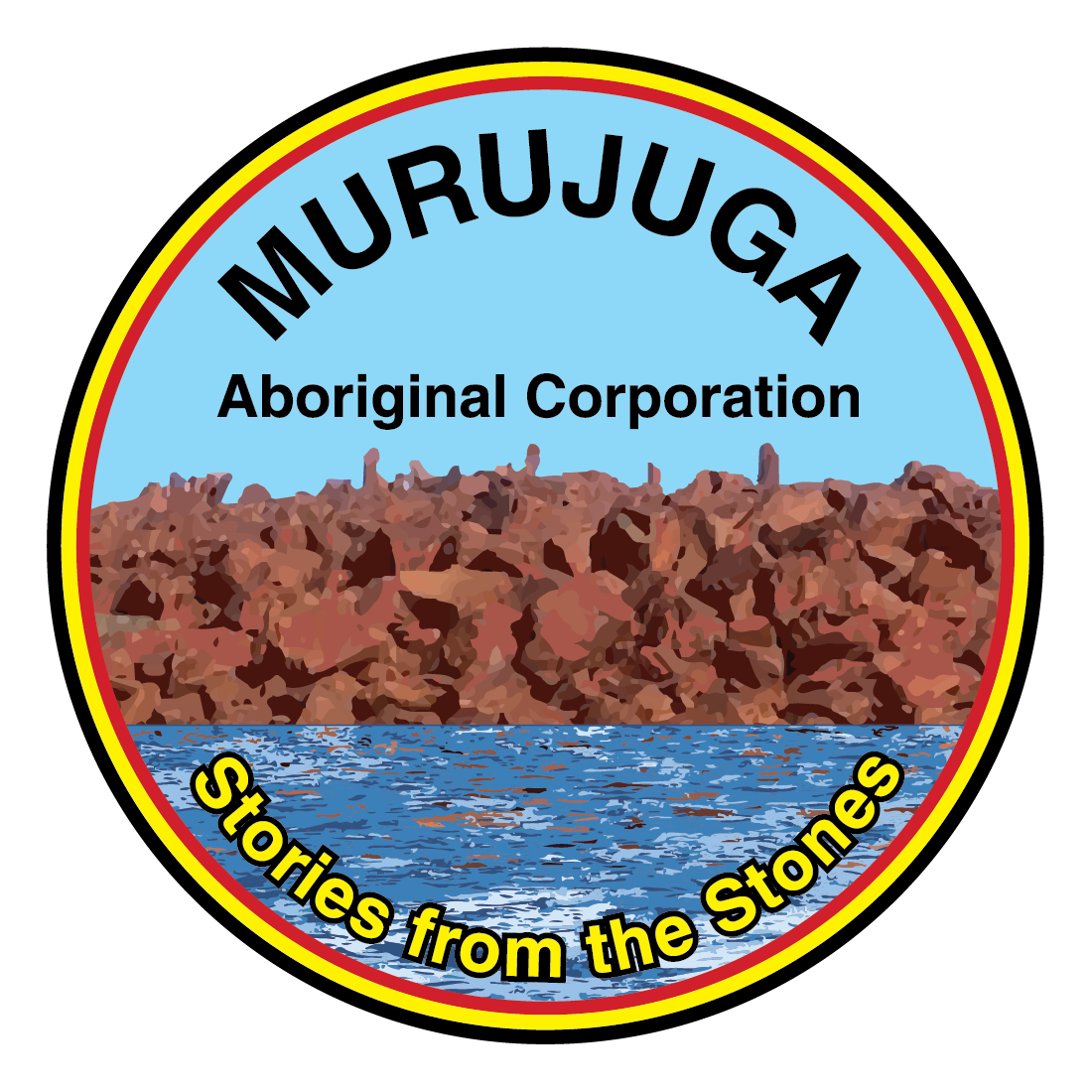
Rocks from Murujuga are front and centre of testing and analysis underway at the WA ChemCentre at Curtin University.
Selected from sites across the Burrup Peninsula and approved by the Murujuga Circle of Elders, the rocks, which do not contain petroglyphs, are a vital part of the rock art monitoring underway on Murujuga.
Using cutting-edge techniques and instruments, ChemCentre and Curtin scientists are building a picture of the theoretical impact of emissions on rocks on Murujuga. This will guide the ongoing monitoring and management of the Murujuga petroglyphs.
The Murujuga Rock Art Monitoring Program (MRAMP) includes 21 new air quality monitoring stations as well as the selection of 54 rock art panels for observation, 65 sample rocks and 26 spatial mapping areas across the Burrup and the Dampier Archipelago islands off Murujuga.
The five rock types included in the monitoring program are granophyre, gabbro, dolerite, granite and basalt, making it one of the most comprehensive studies of its kind ever undertaken anywhere in the world.
The MRAMP is led by the Department of Water and Environmental Regulation (DWER) in partnership with the Murujuga Aboriginal Corporation (MAC). The project has been endorsed by the MAC Board, and every aspect of the monitoring program has been respectfully co-designed with the Murujuga Circle of Elders.
To support MAC in its long-term endeavour to manage the monitoring program, Murujuga rangers are being trained by scientists and over the next five years will take on the on-ground monitoring.
This month the Murujuga Rock Art Stakeholder Reference Group (SRG) will hold its quarterly meeting at Curtin University.
Experts, including WA Scientist of the Year Professor Kliti Grice, will show SRG members and observers how laboratory studies, including sophisticated mass spectrometry techniques, are contributing to the monitoring program.
Independent SRG Chair Professor Stephen van Leeuwen said having access to one of the best equipped chemistry facilities in the world meant the project would deliver scientifically rigorous monitoring, analysis and management of Murujuga’s rock art.
“Utilising the ChemCentre, as well as some of the world’s most advanced techniques and equipment at Curtin’s WA Organic & Isotope Geochemistry Centre, the John de Laeter Research Centre, and the Pawsey Supercomputing Centre, adds to the depth and integrity of the monitoring program,” Professor van Leeuwen said.
MAC chief executive officer Peter Jeffries said the monitoring program had combined cultural and scientific perspectives to ensure rocks were selected considering the sensitivity of the Ngurra (land).
“Having world-class scientists at a facility of this calibre is testament to the quality of the monitoring program,” Mr Jeffries said.
This statement was produced jointly by DWER and MAC. Further information on the monitoring program can be found in DWER’s FAQs or in the Murujuga Rock Art Strategy.


Photos (DWER): 1). Using a Dremel tool to help analyse the patina on a sample of gabbro rock from Murujuga. 2) Curtin University Associate Professor and geomicrobiologist Marco Coolen explains the Murujuga rock analysis to SRG Chair Professor Stephen van Leeuwen.
For further information contact: communications@murujuga.org.au
